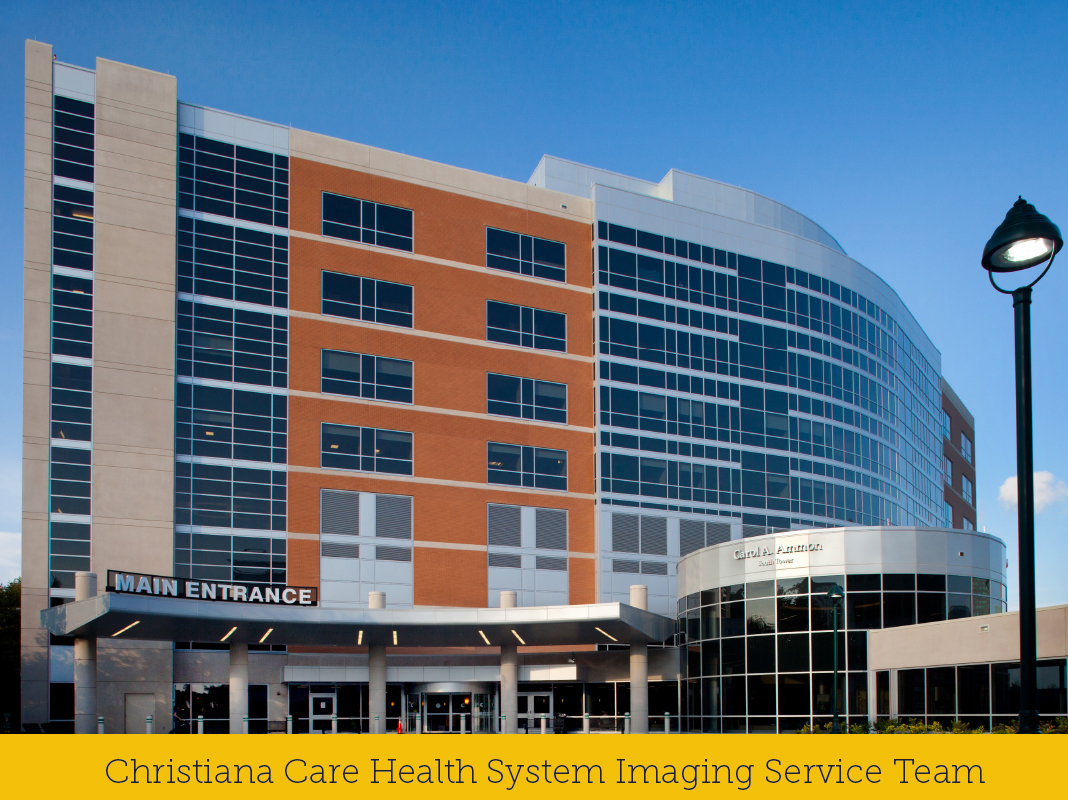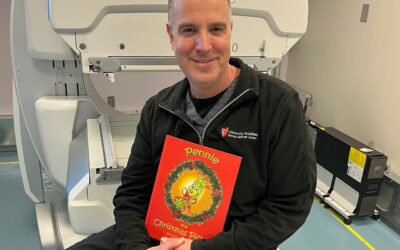By K. Richard Douglas
In 1985, a new hospital opened its doors near Christiana, Delaware. The hospital adopted the name of the nearby town. The facility grew and today the name represents an entire health system. Christiana Care Health System services the health care needs of the surrounding community.
“Headquartered in Delaware, Christiana Care’s clinical engineering team is comprised of 33 members. Our clinical engineers are tasked with managing all of the medical devices used at Christiana Care’s two hospitals – Christiana Hospital in Newark, Delaware and Wilmington Hospital in Wilmington, Delaware – as well as the freestanding Middletown Emergency Department,” says Mike Powers, clinical engineering supervisor at Christiana Care.
He says that the department also manages all the medical devices used at eight imaging clinics, two surgery centers and satellite locations.
Nine members of the team are dedicated to imaging service. The team supports equipment at 13 facilities. In addition, they support over 200 mobile systems.
“My team of imaging service technicians service every type of ultrasound, blood bank irradiator, cardiac cath/interventional lab, general X-ray, fluoroscopic table, mobile C-arm, mini mobile C-arm, portable X-ray, mammography unit, tomosynthesis unit, image guided breast biopsy unit, bone density (DEXA), nuclear camera, SPECT camera, PET-CT, dentral CT, portable CT, and regular CT, MRI scanner and linear accelerator,” Powers says.
Powers says that the entire CE department is integrated.
“While my team is routinely busy repairing units throughout our health system, they will pitch in and help out the other teams when opportunities for collaboration arise,” he says.
The imaging equipment inventory includes 26 CT, six linacs, 15 MRI, 15 IR/cardiac cath, two Pet CT, five DEXA, 12 mammo, 20 general rad rooms, six fluoro tables, as well as many mobile X-rays C-arms and ultrasounds.
The only equipment the imaging team does not service are the process chillers attached to the larger imaging units or one of the radiation therapy devices.
The imaging professionals stay current with training through the evaluation of continuing education based on how much value it yields to the organization.
“For some team members, we send them to the original equipment manufacturer (OEM) or third-party trainers, and fill in the blanks with on-the-job training,” Powers says.
“We also have a training moment – maybe five to 15 minutes – at monthly imaging service team meetings for the person who just returned from training to share what they’ve learned. In our journey to excellence, we subscribe to the maxim that ‘It is best to see one, then do one, then teach one,’ to ensure that we fully maximize our trainings,” he adds.
The team also provides its input into the purchasing and planning process.
“Christiana Care evaluates the need for a device and then brings together a collection of stakeholders who collaborate on which unit best meets our health system’s needs,” Powers says.
“This approach enables us to create services that are cost effective and valued by our patients. We frequently consult with our design department on the feasibility of construction designs, and, in determining equipment needs, we act as a liaison for both the end user and the suite designer,” he says.
He says that the department partners with their colleagues in the finance department to ensure that the contracts for equipment service add value for Christiana Care.
With regards to sourcing parts, Powers says that “to an extent, my exceptional staff of imaging service team technicians are empowered to use their judgement to source parts to add value to Christiana Care.”
Handling Big Projects
In addition to repairs and maintenance, the team also tackles special projects and has been involved in several.
Powers says that one involved collaborating with information technology and changing Internet Protocol (IP) addresses and migrating the entirety of the imaging units to their own subnet. They also handled the installation and testing of four linear accelerators in three years.
“The removal and replacement of six cardiac cath labs and the removal, replacement and upgrading of 12 two-dimensional mammography units, to 3D tomosynthesis units as well as the installation and integration of a new patient monitoring system with our labs within Christiana Care’s Center for Heart & Vascular Health,” Powers says, describing other projects.
Problem solving is another capability of the team. It has taken on some big assignments with colleagues.“We partnered with other caregivers at Christiana Care to transition the health system to a systemwide electrocardiogram (ECG) system,” Powers says.
“The changes made to the ECG workflow in the emergency departments, acute care setting and outpatient services removed unnecessary variations in the ordering, performance, interpretation and immediate access to ECGs. ECGs are immediately available in the patient electronic health record,” he explains.
Powers says that the order-based system workflow has improved overall ECG volume capture by 6.6 percent, and achieved a 99 percent order-to-completion rate. The initial start-up ECG order to completion goal was 95 percent.
“Our clinical engineers are curious and continuously looking for ways to innovate. To that end, we created an image quality assurance program so we could move beyond just inventorying all of our 500-plus ultrasound probes to also performing baseline testing and trend analysis on the image produced,” Powers says.
He says that this process identifies when a probe that has been sent out for repairs has come back and is in good working order.
“This process also identifies whether the probe was repaired correctly. By implementing this process, we ensure that our probes work properly over time. We carried out this process in conjunction with a Transesophageal Echocardiography (TEE) probe care program,” he adds.
The path to entering the imaging service specialization has been strategically developed by the department.
“We have developed a 10-month apprentice program to train employees in the biomed field who have the potential to become imaging service technicians. This apprenticeship has helped us address shortages in the workforce,” Powers explains.
Beyond the team’s work at its facilities, it is a member organization of IAMERS and is seeking ISO certification.
“We are on the CBET and CHTM and CRES testing committees with the Association for the Advancement of Medical Instrumentation (AAMI),” Powers says.
While Christiana Care is one of the country’s most dynamic health systems, centered on improving health outcomes, its imaging service technicians reflect that commitment every day they arrive on the job.








